Casuarina Equisetifolia (Cemara Udang or Mu Ma Huang)
+26
Khaimraj Seepersad
my nellie
ponsmaldo
Robert Steven
ogi uyehara
jonathan e
siriwatn
kcpoole
Peter Woosley
craigw
BonsaiAndino
allan
leonardo
Ka Pabling
gm.it.seacom
Ed Trout
Chris Cochrane
Rob Kempinski
ArtAtkinson
cosmos
priya uthama
hiram
Billy M. Rhodes
sentot
Garykk
jrodriguez
30 posters
Page 5 of 5
Page 5 of 5 •  1, 2, 3, 4, 5
1, 2, 3, 4, 5
 Re: Casuarina Equisetifolia (Cemara Udang or Mu Ma Huang)
Re: Casuarina Equisetifolia (Cemara Udang or Mu Ma Huang)
@robert you casuarina is realy marvelous. is the technique to achieve that leaf similar to pine?

ponsmaldo- Member
 Re: Casuarina Equisetifolia (Cemara Udang or Mu Ma Huang)
Re: Casuarina Equisetifolia (Cemara Udang or Mu Ma Huang)
At long last Robert. I finally saw my favorite tree of yours here in IBC. thanks for the photos and close up shots, that will help a lot in detailing the design of the specie... I personally need these info with casaurinas.
I wish you well with your trip.
regards,
jun
I wish you well with your trip.
regards,
jun
Guest- Guest
 Re: Casuarina Equisetifolia (Cemara Udang or Mu Ma Huang)
Re: Casuarina Equisetifolia (Cemara Udang or Mu Ma Huang)
Yes, the character of Casuarina, the leaves and fruits are indeed resembling conifers.
I was just lucky to have received from a friend who was teaching in a university, a book "Casuarinas" written by N.S. Subbarao/C.Rodriguez-Barrueco, published in 1995 by Science Publishers,Inc, containining a complete information in Casuarina. I have not finished reading yet, there are many useful information that we can use for caring Casuarina as bonsai. I will post it later....
Here is my other Casuarina..
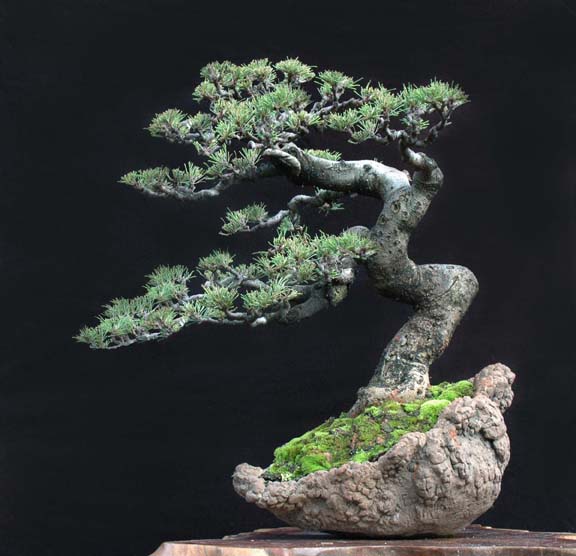
I was just lucky to have received from a friend who was teaching in a university, a book "Casuarinas" written by N.S. Subbarao/C.Rodriguez-Barrueco, published in 1995 by Science Publishers,Inc, containining a complete information in Casuarina. I have not finished reading yet, there are many useful information that we can use for caring Casuarina as bonsai. I will post it later....
Here is my other Casuarina..

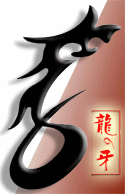
Robert Steven- Member
 Long time since 2011....
Long time since 2011....
Dear Robert, I presume that you have already finished the book..., do you think that there is additional info about casuarinas apart from those at you webpage?
If any, it would be greatly appreciated if you post it here, too.
I have found lately that casuarinas have been introduced in Greece many many years ago and they are doing fine! So, I have plans....
If any, it would be greatly appreciated if you post it here, too.
I have found lately that casuarinas have been introduced in Greece many many years ago and they are doing fine! So, I have plans....

my nellie- Member
 Re: Casuarina Equisetifolia (Cemara Udang or Mu Ma Huang)
Re: Casuarina Equisetifolia (Cemara Udang or Mu Ma Huang)
my nellie wrote:Dear Robert, I presume that you have already finished the book..., do you think that there is additional info about casuarinas apart from those at you webpage?
If any, it would be greatly appreciated if you post it here, too.
I have found lately that casuarinas have been introduced in Greece many many years ago and they are doing fine! So, I have plans....
Worth to make a try..then...

Robert Steven- Member
 Re: Casuarina Equisetifolia (Cemara Udang or Mu Ma Huang)
Re: Casuarina Equisetifolia (Cemara Udang or Mu Ma Huang)
Exactly! I am already in search of some nursery growing casuarinas.Robert Steven wrote:Worth to make a try..then...

my nellie- Member
 Re: Casuarina Equisetifolia (Cemara Udang or Mu Ma Huang)
Re: Casuarina Equisetifolia (Cemara Udang or Mu Ma Huang)
Alexandra,
find out which Casuarina type you want from Sifu Robert.
I am seeing notes that the Equisetifolia only lives for about 20 to 50 years. On our side, they do tend to die frequently.
Best of luck.
Khaimraj
* I am still trying with our locally available material, will be years before I show anything.
find out which Casuarina type you want from Sifu Robert.
I am seeing notes that the Equisetifolia only lives for about 20 to 50 years. On our side, they do tend to die frequently.
Best of luck.
Khaimraj
* I am still trying with our locally available material, will be years before I show anything.

Khaimraj Seepersad- Member
 Re: Casuarina Equisetifolia (Cemara Udang or Mu Ma Huang)
Re: Casuarina Equisetifolia (Cemara Udang or Mu Ma Huang)
Very nice Casuarina's, i am new to this specie, one of my new collection and planning to make a nursery like i did to my premna nursery. i have newly hunted Casuarina materials. i will post it soon if they all survive. i hope you guys can give some advice about this specie. thank you so much and god bless.
jong- Member
 Re: Casuarina Equisetifolia (Cemara Udang or Mu Ma Huang)
Re: Casuarina Equisetifolia (Cemara Udang or Mu Ma Huang)
Khaimraj, until now, I always thought this tree is a pinus species...  I was looking at those tall trees and I liked their pending long needle like leaves but I didn't know their name.
I was looking at those tall trees and I liked their pending long needle like leaves but I didn't know their name.
Casuarina equisetifolia is a common tree in the parks here in Athens (I understand it is also familiar elsewhere in Greece) and has been imported since early 19th c.
I read that maximum growth is reached in 20 years with a maximum life span of 40 to 50 years, so this is more than enough for my age of 60 yrs
They are fast growing and this makes them much more appealing to me, thus I will take my chances with them.
Casuarina equisetifolia is a common tree in the parks here in Athens (I understand it is also familiar elsewhere in Greece) and has been imported since early 19th c.
I read that maximum growth is reached in 20 years with a maximum life span of 40 to 50 years, so this is more than enough for my age of 60 yrs
They are fast growing and this makes them much more appealing to me, thus I will take my chances with them.

my nellie- Member
 Re: Casuarina Equisetifolia (Cemara Udang or Mu Ma Huang)
Re: Casuarina Equisetifolia (Cemara Udang or Mu Ma Huang)
Hello any updates about casuarina?
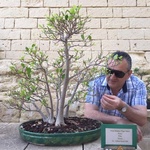
cosmos- Member
 Re: Casuarina Equisetifolia (Cemara Udang or Mu Ma Huang)
Re: Casuarina Equisetifolia (Cemara Udang or Mu Ma Huang)
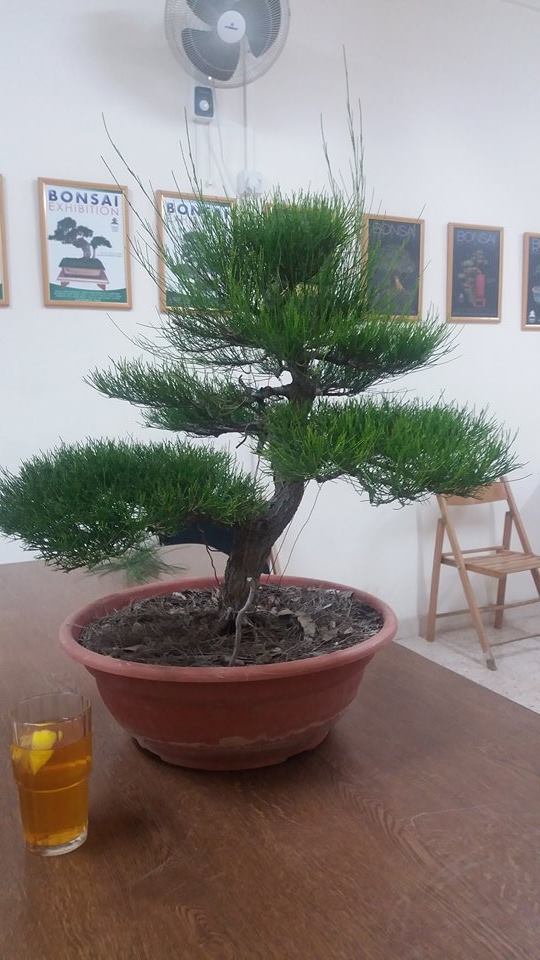
Above is a casuarina that has been grown from a seed over 7 years by one of our members at BCG-Malta. Thanks to this thread I have learnt a lot and I made it my aim that members in our Maltese club start growing this species as a bonsai. MANY thanks go to Jose Rodriguez, Robert Stevens and Jun Llaga for making me believe in this species as a bonsai. And now I am happy to tell them that their casuarina trees has 'brothers' in Europe too, if only humble ones. Thanks again.
Alfred (Cosmos)

cosmos- Member
 Re: Casuarina Equisetifolia (Cemara Udang or Mu Ma Huang)
Re: Casuarina Equisetifolia (Cemara Udang or Mu Ma Huang)
nice, for a tree only 7 years old, this one looks great.

Leo Schordje- Member
 Re: Casuarina Equisetifolia (Cemara Udang or Mu Ma Huang)
Re: Casuarina Equisetifolia (Cemara Udang or Mu Ma Huang)
There are also casuarinas here in Greece (from import I presume)
At the end of last winter, I have seen some very large trees surrounding a school's yard which were pruned very hard height wise and coming spring the trees were sprouting from everywhere! Old bark at the bottom of the trunk!
It is my forthcoming project to find a decent nursery casuarina and give it a try
At the end of last winter, I have seen some very large trees surrounding a school's yard which were pruned very hard height wise and coming spring the trees were sprouting from everywhere! Old bark at the bottom of the trunk!
It is my forthcoming project to find a decent nursery casuarina and give it a try

my nellie- Member
 Casuarina air-layering
Casuarina air-layering
Thanks Leo and Nellie for your comments. I am sure that there are casuarinas in Europe but it has not been potentially used for bonsai. Even in Malta these trees have been imported many many years ago and used as landscape and street trees. I advice to try air-layering as it will save you a lot of time.
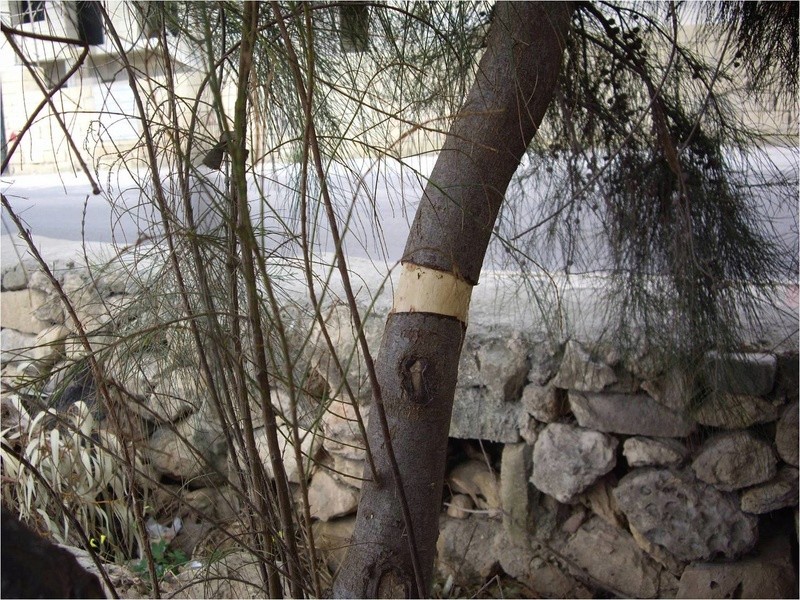


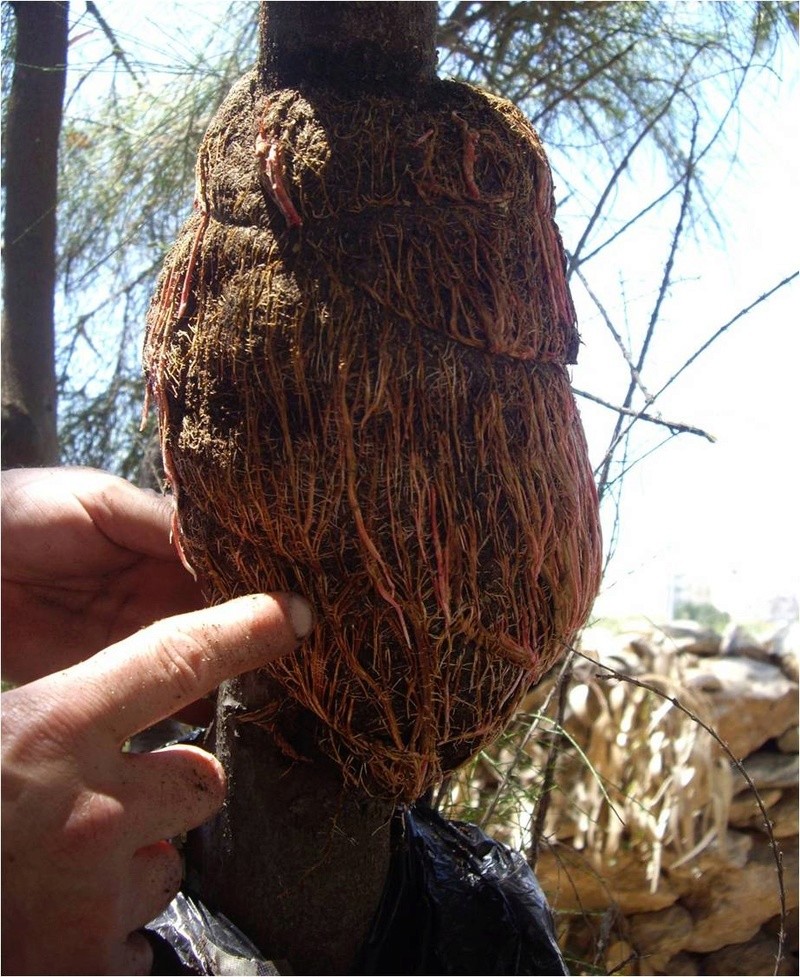

Alfred (Cosmos)





Alfred (Cosmos)

cosmos- Member
 Re: Casuarina Equisetifolia (Cemara Udang or Mu Ma Huang)
Re: Casuarina Equisetifolia (Cemara Udang or Mu Ma Huang)
Sound advice, Alfred! Thank you for sharing the documentary photos 
The layering was made early in spring, wasn't it? And how long did it take to make all these roots?
The layering was made early in spring, wasn't it? And how long did it take to make all these roots?

my nellie- Member
 Re: Casuarina Equisetifolia (Cemara Udang or Mu Ma Huang)
Re: Casuarina Equisetifolia (Cemara Udang or Mu Ma Huang)
I always do air-layering when the tree is actively growing. This is explained physiologically. As the tree is active, food that is made in excess in the leaves will tend to go down to be stored in the roots and the cortex of main trunk. But as the food goes down it finds the created gap and stops there, feeding the cambium layer thus exposed. The cells of the cambium layer starts to divide rapidly with all the food being supplied. The callus is formed and finally the roots. Indeed, the air-layer was done in July and it only took about 4 weeks.
Alfred (cosmos)
Alfred (cosmos)

cosmos- Member
 Re: Casuarina Equisetifolia (Cemara Udang or Mu Ma Huang)
Re: Casuarina Equisetifolia (Cemara Udang or Mu Ma Huang)
Hi cosmos!
just passing by at IBC and saw my name on the thread.
You are welcome!
It is good to hear My works and talk here before helped you guys.
regards,
jun:D
just passing by at IBC and saw my name on the thread.
You are welcome!
It is good to hear My works and talk here before helped you guys.
regards,
jun:D
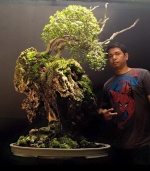
jun- Member
 Re: Casuarina Equisetifolia (Cemara Udang or Mu Ma Huang)
Re: Casuarina Equisetifolia (Cemara Udang or Mu Ma Huang)
HIT US WITH SOME TREES JUN !!!

Kevin S - Wisco Bonsai- Member
 Re: Casuarina Equisetifolia (Cemara Udang or Mu Ma Huang)
Re: Casuarina Equisetifolia (Cemara Udang or Mu Ma Huang)
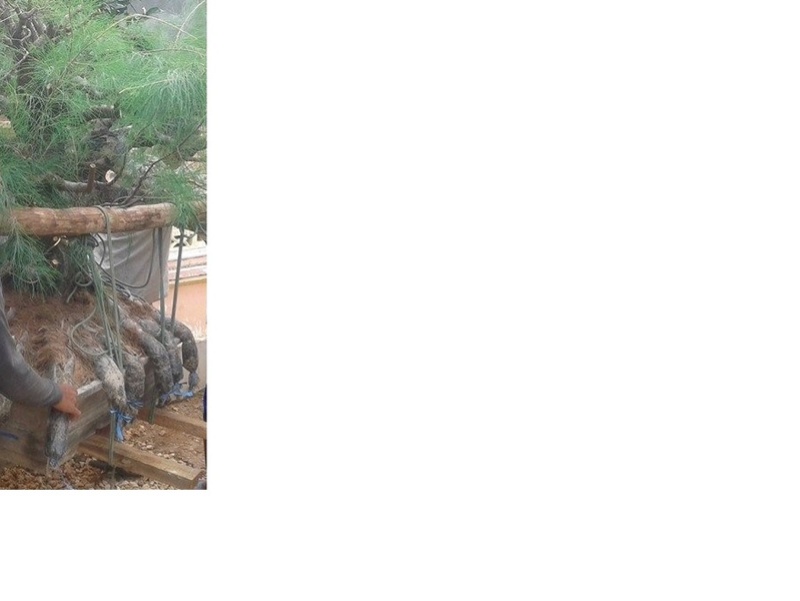
I have found this picture of a gigantic casaurina being transported. Please note the blue ribbon like material constricting each root. From previous pictures in this thread it is usual to fatten up the trunk and nebari by growing surface roots and tunnel them to the ground.
Does anybody know how and why this constricting ribbon method works?
Thanks.

cosmos- Member
 Re: Casuarina Equisetifolia (Cemara Udang or Mu Ma Huang)
Re: Casuarina Equisetifolia (Cemara Udang or Mu Ma Huang)
After some deliberation the answer to the question I asked might be the following. Still I would be very grateful for any feedback from the experts on Casuarina, like Robert Stevens, Juan Llaga or Jose Rodriguez. Thanks beforehand.
One technique that some use to fatten up the base of a main trunk is to tie a tourniquet at the base near the soil surface. This should be tight enough to press on the phloem tissue (the vessels that carry excess food from the leaves to be stored in the roots and trunk). In doing so the excess food cannot pass all and so it accumulates above the tourniquet, fattening up the trunk. In a similar way I am presuming that making ties on the roots would help fatten up the roots and create the massive nebari.
One technique that some use to fatten up the base of a main trunk is to tie a tourniquet at the base near the soil surface. This should be tight enough to press on the phloem tissue (the vessels that carry excess food from the leaves to be stored in the roots and trunk). In doing so the excess food cannot pass all and so it accumulates above the tourniquet, fattening up the trunk. In a similar way I am presuming that making ties on the roots would help fatten up the roots and create the massive nebari.

cosmos- Member
 Re: Casuarina Equisetifolia (Cemara Udang or Mu Ma Huang)
Re: Casuarina Equisetifolia (Cemara Udang or Mu Ma Huang)
cosmos wrote:After some deliberation the answer to the question I asked might be the following. Still I would be very grateful for any feedback from the experts on Casuarina, like Robert Stevens, Juan Llaga or Jose Rodriguez. Thanks beforehand.
One technique that some use to fatten up the base of a main trunk is to tie a tourniquet at the base near the soil surface. This should be tight enough to press on the phloem tissue (the vessels that carry excess food from the leaves to be stored in the roots and trunk). In doing so the excess food cannot pass all and so it accumulates above the tourniquet, fattening up the trunk. In a similar way I am presuming that making ties on the roots would help fatten up the roots and create the massive nebari.
Yes Cosmos. Ii is used to create a thicker root/nebari.
regards,
jun

jun- Member
 Re: Casuarina Equisetifolia (Cemara Udang or Mu Ma Huang)
Re: Casuarina Equisetifolia (Cemara Udang or Mu Ma Huang)
Hi Jun
Thanks for your confirming feedback.
Thanks for your confirming feedback.

cosmos- Member
Page 5 of 5 •  1, 2, 3, 4, 5
1, 2, 3, 4, 5
 Similar topics
Similar topics» Casuarina equisetifolia
» Casuarina equisetifolia
» Casuarina equisetifolia
» Large Casuarina equisetifolia
» Casuarina equisetifolia Development
» Casuarina equisetifolia
» Casuarina equisetifolia
» Large Casuarina equisetifolia
» Casuarina equisetifolia Development
Page 5 of 5
Permissions in this forum:
You cannot reply to topics in this forum






